Immunology/Inflammation
The immune and inflammation-related pathway including the Toll-like receptors pathway, the B cell receptor signaling pathway, the T cell receptor signaling pathway, etc.
Toll-like receptors (TLRs) play a central role in host cell recognition and responses to microbial pathogens. TLR4 initially recruits TIRAP and MyD88. MyD88 then recruits IRAKs, TRAF6, and the TAK1 complex, leading to early-stage activation of NF-κB and MAP kinases [1]. TLR4 is endocytosed and delivered to intracellular vesicles and forms a complex with TRAM and TRIF, which then recruits TRAF3 and the protein kinases TBK1 and IKKi. TBK1 and IKKi catalyze the phosphorylation of IRF3, leading to the expression of type I IFN [2].
BCR signaling is initiated through ligation of mIg under conditions that induce phosphorylation of the ITAMs in CD79, leading to the activation of Syk. Once Syk is activated, the BCR signal is transmitted via a series of proteins associated with the adaptor protein B-cell linker (Blnk, SLP-65). Blnk binds CD79a via non-ITAM tyrosines and is phosphorylated by Syk. Phospho-Blnk acts as a scaffold for the assembly of the other components, including Bruton’s tyrosine kinase (Btk), Vav 1, and phospholipase C-gamma 2 (PLCγ2) [3]. Following the assembly of the BCR-signalosome, GRB2 binds and activates the Ras-guanine exchange factor SOS, which in turn activates the small GTPase RAS. The original RAS signal is transmitted and amplified through the mitogen-activated protein kinase (MAPK) pathway, which including the serine/threonine-specific protein kinase RAF followed by MEK and extracellular signal related kinases ERK 1 and 2 [4]. After stimulation of BCR, CD19 is phosphorylated by Lyn. Phosphorylated CD19 activates PI3K by binding to the p85 subunit of PI3K and produce phosphatidylinositol-3,4,5-trisphosphate (PIP3) from PIP2, and PIP3 transmits signals downstream [5].
Central process of T cells responding to specific antigens is the binding of the T-cell receptor (TCR) to specific peptides bound to the major histocompatibility complex which expressed on antigen-presenting cells (APCs). Once TCR connected with its ligand, the ζ-chain–associated protein kinase 70 molecules (Zap-70) are recruited to the TCR-CD3 site and activated, resulting in an initiation of several signaling cascades. Once stimulation, Zap-70 forms complexes with several molecules including SLP-76; and a sequential protein kinase cascade is initiated, consisting of MAP kinase kinase kinase (MAP3K), MAP kinase kinase (MAPKK), and MAP kinase (MAPK) [6]. Two MAPK kinases, MKK4 and MKK7, have been reported to be the primary activators of JNK. MKK3, MKK4, and MKK6 are activators of P38 MAP kinase [7]. MAP kinase pathways are major pathways induced by TCR stimulation, and they play a key role in T-cell responses.
Phosphoinositide 3-kinase (PI3K) binds to the cytosolic domain of CD28, leading to conversion of PIP2 to PIP3, activation of PKB (Akt) and phosphoinositide-dependent kinase 1 (PDK1), and subsequent signaling transduction [8].
References
[1] Kawai T, Akira S. The role of pattern-recognition receptors in innate immunity: update on Toll-like receptors[J]. Nature immunology, 2010, 11(5): 373-384.
[2] Kawai T, Akira S. Toll-like receptors and their crosstalk with other innate receptors in infection and immunity[J]. Immunity, 2011, 34(5): 637-650.
[3] Packard T A, Cambier J C. B lymphocyte antigen receptor signaling: initiation, amplification, and regulation[J]. F1000Prime Rep, 2013, 5(40.10): 12703.
[4] Zhong Y, Byrd J C, Dubovsky J A. The B-cell receptor pathway: a critical component of healthy and malignant immune biology[C]//Seminars in hematology. WB Saunders, 2014, 51(3): 206-218.
[5] Baba Y, Matsumoto M, Kurosaki T. Calcium signaling in B cells: regulation of cytosolic Ca 2+ increase and its sensor molecules, STIM1 and STIM2[J]. Molecular immunology, 2014, 62(2): 339-343.
[6] Adachi K, Davis M M. T-cell receptor ligation induces distinct signaling pathways in naive vs. antigen-experienced T cells[J]. Proceedings of the National Academy of Sciences, 2011, 108(4): 1549-1554.
[7] Rincón M, Flavell R A, Davis R A. The Jnk and P38 MAP kinase signaling pathways in T cell–mediated immune responses[J]. Free Radical Biology and Medicine, 2000, 28(9): 1328-1337.
[8] Bashour K T, Gondarenko A, Chen H, et al. CD28 and CD3 have complementary roles in T-cell traction forces[J]. Proceedings of the National Academy of Sciences, 2014, 111(6): 2241-2246.
Ziele für Immunology/Inflammation
- Cyclic GMP-AMP Synthase(1)
- Apoptosis(137)
- 5-Lipoxygenase(18)
- TLR(106)
- Papain(2)
- PGDS(1)
- PGE synthase(26)
- SIKs(10)
- IκB/IKK(83)
- AP-1(2)
- KEAP1-Nrf2(47)
- NOD1(1)
- NF-κB(265)
- Interleukin Related(129)
- 15-lipoxygenase(2)
- Others(10)
- Aryl Hydrocarbon Receptor(35)
- CD73(16)
- Complement System(46)
- Galectin(30)
- IFNAR(19)
- NO Synthase(78)
- NOD-like Receptor (NLR)(37)
- STING(84)
- Reactive Oxygen Species(434)
- FKBP(14)
- eNOS(4)
- iNOS(24)
- nNOS(21)
- Glutathione(37)
- Adaptive Immunity(144)
- Allergy(129)
- Arthritis(25)
- Autoimmunity(134)
- Gastric Disease(64)
- Immunosuppressants(27)
- Immunotherapeutics(3)
- Innate Immunity(411)
- Pulmonary Diseases(76)
- Reactive Nitrogen Species(43)
- Specialized Pro-Resolving Mediators(42)
- Reactive Sulfur Species(24)
Produkte für Immunology/Inflammation
- Bestell-Nr. Artikelname Informationen
-
GC18655
3-hydroxy Decanoic Acid methyl ester
3-hydroxy Decanoic acid methyl ester is a hydroxylated fatty acid methyl ester that has been found in methyl-branched poly(3-hydroxyalkanoate) (PHA) polymers produced by P.
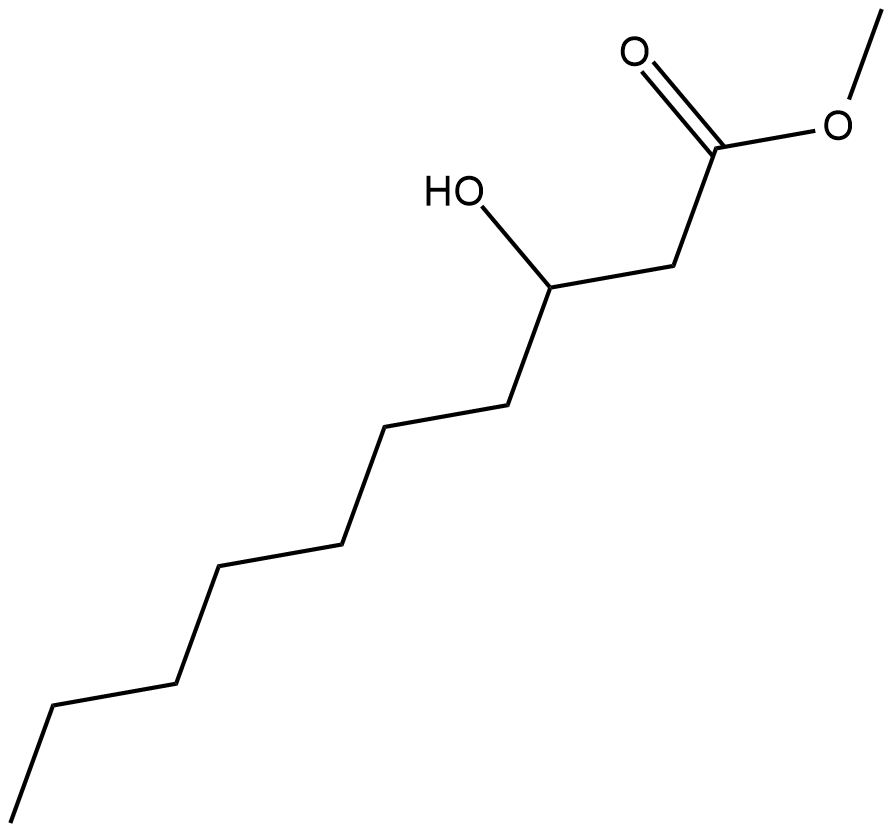
-
GC42275
3-hydroxy Desloratidine
3-hydroxy Desloratidine is a major metabolite of desloratadine , a tricyclic antagonist of the histamine H1 receptor.

-
GC42276
3-hydroxy Docosanoic Acid
3-hydroxy Docosanoic acid is a hydroxylated form of the 22-carbon saturated docosanoic acid.

-
GC45774
3-hydroxy Heptadecanoic Acid
A hydroxy fatty acid

-
GC40474
3-hydroxy Lignoceric Acid
3-hydroxy Lignoceric acid is a hydroxylated form of the 24-carbon saturated lignoceric acid.

-
GC49847
3-hydroxy methyl Cefuroxime
3-Hydroxymethyl-Cefuroxim ist ein Abbauprodukt von Cefuroxim.

-
GC42280
3-hydroxy Myristic Acid methyl ester
3-hydroxy Myristic acid methyl ester is a hydroxylated fatty acid methyl ester that has been found in E.

-
GC42281
3-hydroxy Palmitic Acid
3-hydroxy Palmitic acid is a form of the 16:0 lipid palmitic acid.

-
GC42282
3-hydroxy Palmitic Acid methyl ester
3-hydroxy Palmitic acid methyl ester (3-hydroxy PAME) is an esterized long-chain fatty acid involved in quorum sensing in R.

-
GC42286
3-hydroxy Stearic Acid
3-hydroxy Stearic acid is a long-chain saturated fatty acid and intermediate in the production of 3-hydroxy octadecanedioic acid from stearic acid.

-
GC42288
3-hydroxy Tridecanoic Acid
3-hydroxy Tridecanoic acid is a 13-carbon saturated fatty acid found in bacterial lipopolysaccharides (LPS).

-
GC49819
3-Hydroxy-4-methyl-2(5H)-thiophenone
A degradation product of cefaclor

-
GC45336
3-hydroxy-DL-Kynurenine
3-Hydroxy-DL-Kynurenin, ein Metabolit von Tryptophan, ist ein potenzielles endogenes Neurotoxin, dessen erhÖhte Spiegel bei mehreren neurodegenerativen Erkrankungen beschrieben wurden.

-
GC49364
3-Hydroxycoumarin
3-Hydroxycumarin ist ein starker Redox-Inhibitor von menschlichem 15-LOX-1.

-
GC45337
3-Hydroxyterphenyllin
3-Hydroxyterphenyllin ist ein Metabolit von Aspergillus candidus. 3-Hydroxyterphenyllin unterdrÜckt die Proliferation und verursacht ZytotoxizitÄt gegenÜber A2780/CP70- und OVCAR-3-Zellen. 3-Hydroxyterphenyllin induziert S-Phasen-Arrest und Apoptose. 3-Hydroxyterphenyllin hat das Potenzial fÜr die Erforschung von Eierstockkrebs.

-
GC31290
3-Indolepropionic acid
3-IndolpropionsÄure hat sich als starkes Antioxidans erwiesen und hat Potenzial bei der Behandlung der Alzheimer-Krankheit.
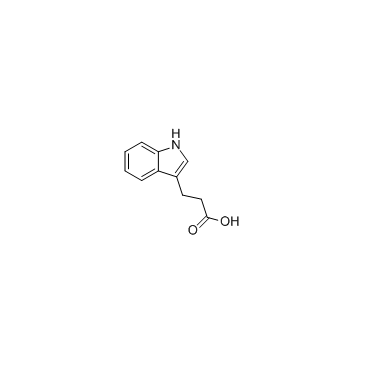
-
GC48457
3-keto Fusidic Acid
An active metabolite of fusidic acid

-
GC64630
3-O-Acetyl-α-boswellic acid
3-O-Acetyl-α-BoswelliasÄure unterdrÜckt die T-Zell-Funktion.
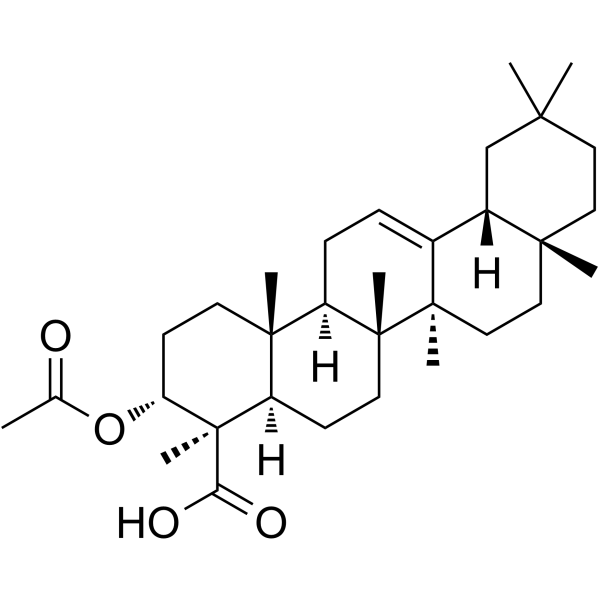
-
GC48488
3-Oxobetulin Acetate
A derivative of betulin

-
GC40692
3-Propylxanthine
3-Propylxanthin wirkt als selektiver und kompetitiver A2B-Rezeptorantagonist mit dem Ki von 7 μM.

-
GC45354
4β-Hydroxywithanolide E
4β-Hydroxywithanolide E, isoliert aus Physalis peruviana L.

-
GC48437
4'-Acetyl Chrysomycin A
A bacterial metabolite with antibacterial and anticancer activities

-
GC42406
4'-hydroxy Chalcone
4'-Hydroxy-Chalcon ist ein aus der Süßholzwurzel isoliertes Chalcon mit hepatoprotektiver Aktivität.

-
GC18527
4'-hydroxy Flurbiprofen
A major active metabolite of flurbiprofen
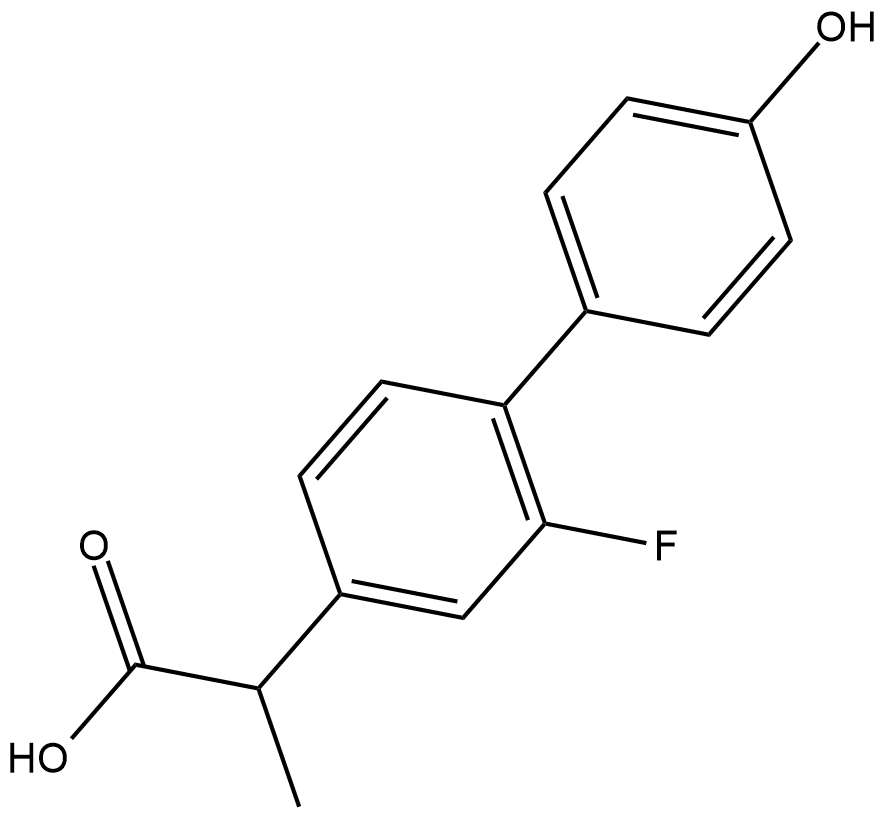
-
GC46608
4-(N-Boc-amino)piperidine
An organic building block

-
GC46609
4-(Phenylcarbonyl)benzoic Acid
A photooxidant

-
GC49337
4-Acetamidobenzenesulfonamide
A metabolite of asulam and sulfanilamide

-
GC42338
4-Aminobenzoic Acid hydrazide
4-AminobenzoesÄurehydrazid ist ein irreversibler MPO-Myeloperoxidase-Hemmer mit einem IC50-Wert von 0,3 μM.

-
GC42351
4-carboxy TEMPO
4-carboxy TEMPO is a nitroxide and spin label.

-
GC46630
4-CPPC
A MIF-2 inhibitor

-
GC42369
4-Deoxypyridoxine (hydrochloride)
4-Deoxypyridoxine (4-DPD) is a vitamin B6 antimetabolite with diverse biological activities.

-
GC42373
4-epi Minocycline
4-epi Minocycline is the main degradation product of and a potential impurity in commercial preparations of minocycline.

-
GC42374
4-epi-Chlortetracycline (hydrochloride)
Chlortetracycline is an analog of tetracycline, a broad spectrum antibiotic.

-
GC42401
4-hydroperoxy Cyclophosphamide
Ein aktiviertes Analogon von Cyclophosphamid.

-
GC18858
4-hydroxy Alternariol
4-hydroxy Alternariol is a metabolite of the mycotoxin alternariol formed through cytochrome P450 (CYP450) metabolism.
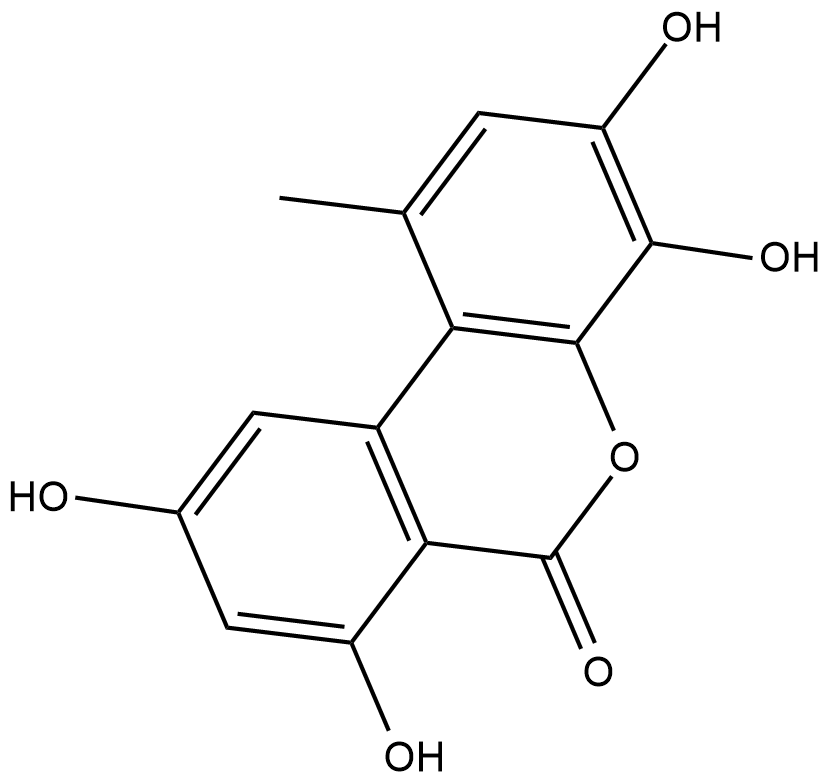
-
GC49575
4-hydroxy Omeprazole sulfide
A metabolite of omeprazole

-
GA20418
4-Hydroxy-hippuric acid
Polyphenol metabolite.

-
GC38663
4-Hydroxychalcone
4-Hydroxychalcon ist ein Chalcon-Metabolit mit antiangiogenetischen und entzÜndungshemmenden AktivitÄten.
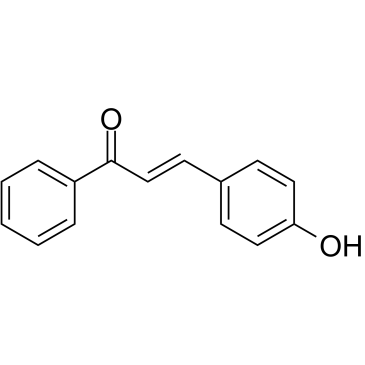
-
GC33815
4-Hydroxyphenylacetic acid
4-HydroxyphenylessigsÄure, ein wichtiger, von Mikrobiota stammender Metabolit von Polyphenolen, ist an der antioxidativen Wirkung beteiligt.
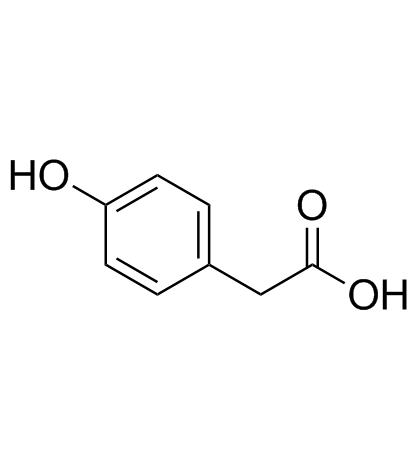
-
GC18853
4-isocyanato TEMPO
4-isocyanato TEMPO is a spin labeling reagent used to label the 2'-position in RNA.
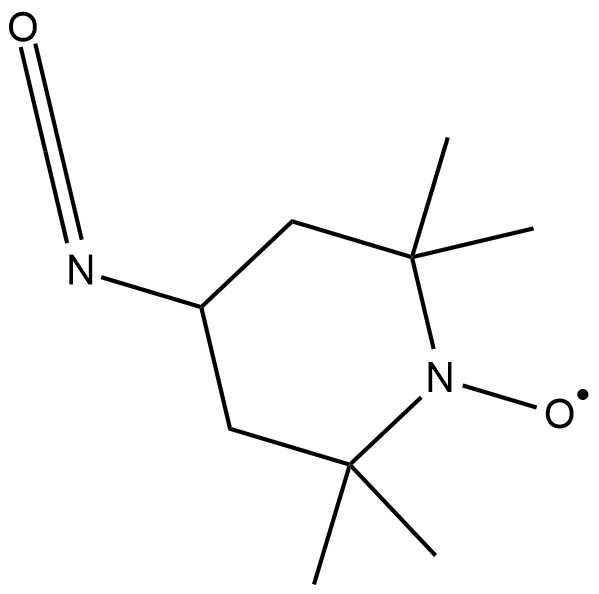
-
GC41299
4-Methylumbelliferyl Caprylate
4-Methylumbelliferyl caprylate (MUCAP) is a fluorogenic substrate for C8 esterase.

-
GC42448
4-Methylumbelliferyl-N-acetyl-α-D-Neuraminic Acid (sodium salt)
4-Methylumbelliferyl-N-acetyl-α-D-NeuraminsÄure (Natriumsalz) ist ein fluoreszierendes Substrat, das fÜr den Neuraminidase-AktivitÄtsassay verwendet wird.

-
GC42461
4-Nitrophenyl β-D-Cellobioside
4-Nitrophenyl β-D-cellobioside is a disaccharide and an enzyme substrate.

-
GC46672
4-Nitrophenyl Palmitate
A colorimetric lipase and esterase substrate

-
GC35143
4-O-Methyl honokiol
4-O-Methylhonokiol ist ein natÜrliches Neolignan, das aus Magnolia officinalis isoliert wird, als PPARγ-Agonist wirkt und die NF-κB-AktivitÄt hemmt und fÜr die Krebs- und EntzÜndungsforschung verwendet wird.
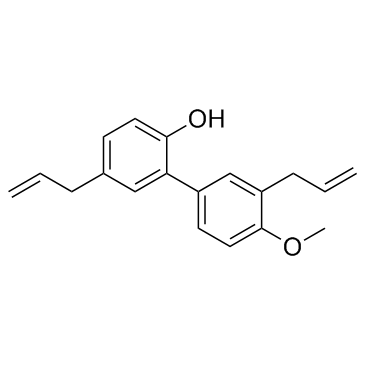
-
GC31648
4-Octyl Itaconate
4-Octyl-Itakonat (4-OI) ist ein zellpermeables Itakonat-Derivat. Itakonat und 4-Octyl-Itakonat hatten eine ähnliche Thiol-Reaktivität, wodurch sich 4-Octyl-Itakonat als geeigneter Ersatz für Itakonat zur Untersuchung seiner biologischen Funktion eignet.
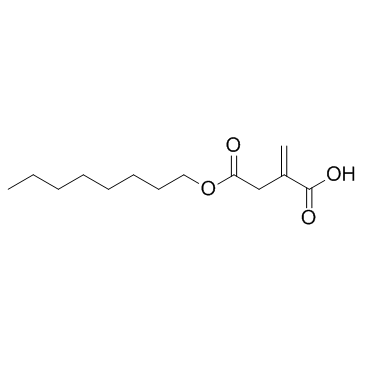
-
GC46673
4-octynyl Itaconate
4-Octinyl-Itaconat (ITalk) ist eine spezifische bioorthogonale Sonde fÜr die quantitative und ortsspezifische chemoproteomische Profilierung von Itaconation in lebenden Zellen.

-
GC49127
4-oxo Cyclophosphamide
An inactive metabolite of cyclophosphamide

-
GC49244
4-oxo Isotretinoin
An active metabolite of isotretinoin

-
GC40477
4-Thiouracil
4-Thiouracil is a site-specific, photoactivatable probe used to detect RNA structures and nucleic acid-nucleic acid contacts.

-
GC18582
5'-hydroxy Meloxicam
A metabolite of meloxicam
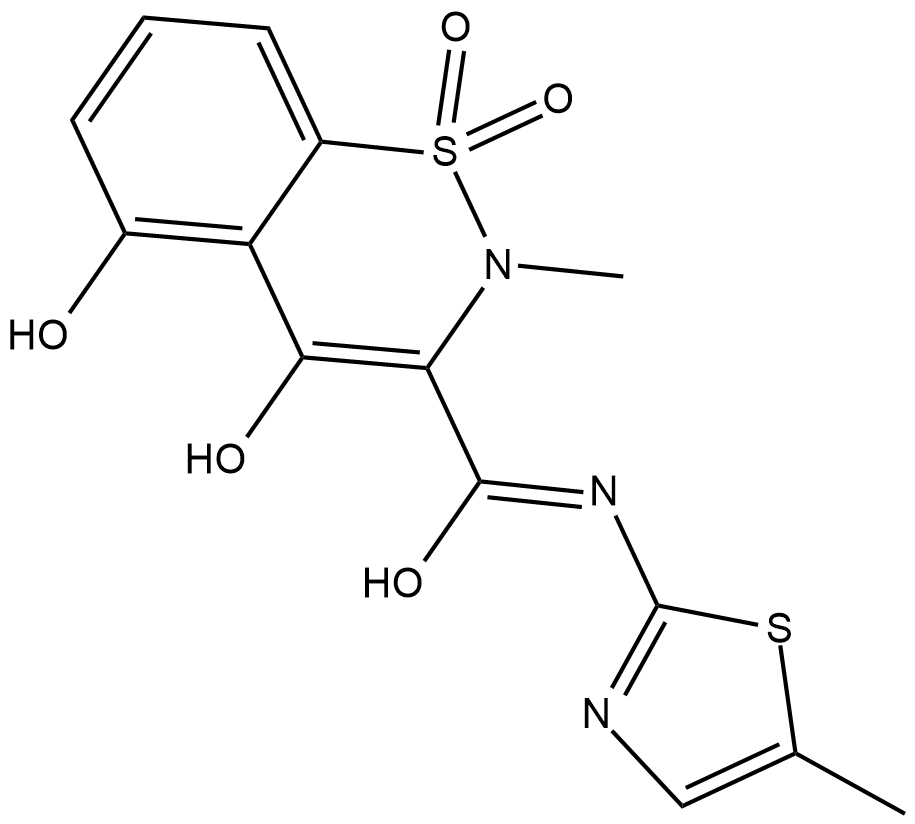
-
GC48381
5'-pApA (sodium salt)
A linearized form of cyclic di-AMP

-
GC48375
5'-pGpG (sodium salt)
A linearized form of cyclic di-GMP

-
GC49339
5(6)-Carboxy-2′,7′-dichlorofluorescein diacetate
5(6)-Carboxy-&2#8242;,7′-Dichlorfluoresceindiacetat ist ein zellgängiger Fluoreszenzindikator.

-
GC41126
5(S),12(S)-DiHETE
5(S),12(S)-DiHETE is a natural bioactive lipid derived from arachidonic acid.
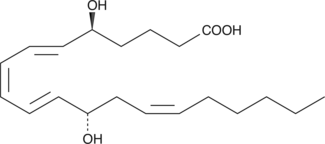
-
GC41127
5(S),15(S)-DiHETE
5(S),15(S)-DiHETE ist ein „aktiviertes“ Intermediat, hemmt die Thrombozytenaggregation mit einem IC50 von 1,3 μM.
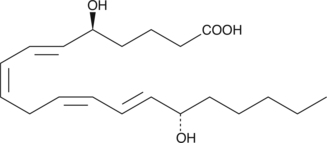
-
GC40782
5(Z),11(Z),14(Z)-Eicosatrienoic Acid
5(Z),11(Z),14(Z)-Eicosatrienoic acid is a polyunsaturated fatty acid found in various natural sources including maritime pine (Pinus pinaster) seed oil (MPSO), gymnospermae leaves and seeds, and freshwater gastropods.

-
GC46075
5,6-dimethyl-2-Thiouracil
A heterocyclic building block

-
GC48815
5,7,8-Trimethoxydictamnine
A quinoline alkaloid with antimalarial activity

-
GC52091
5,7-Dichlorothiazolo[5,4-d]pyrimidine
A building block
![5,7-Dichlorothiazolo[5,4-d]pyrimidine Chemical Structure 5,7-Dichlorothiazolo[5,4-d]pyrimidine Chemical Structure](/media/struct/GC5/GC52091.png)
-
GC52227
5-(3',4'-Dihydroxyphenyl)-γ-Valerolactone
An active metabolite of various polyphenols

-
GC40527
5-(Hydroxymethyl)-2'-deoxyuridine
5-(Hydroxymethyl)-2'-deoxyuridine is a nucleoside analog with anticancer and antiviral activities.

-
GC52413
5-Aminosalicylic Acid-d7
An internal standard for the quantification of 5-aminosalicylic acid

-
GC49827
5-Androstenetriol
An active metabolite of DHEA

-
GC45357
5-Chlorouracil

-
GC49233
5-Feruloylquinic Acid
5-FeruloylchinasÄure (5-FQA) besitzt antioxidative Wirkungen und tyrosinasehemmende AktivitÄten.

-
GC39760
5-Galloylquinic acid
5-GalloylchinasÄure, ein HauptfÄnger der reaktiven Sauerstoffspezies (ROS) in grÜnem Tee.
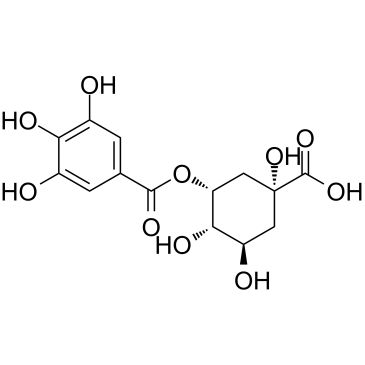
-
GC46033
5-Heneicosylresorcinol
An alkylresorcinol

-
GC42549
5-hydroxy Thiabendazole
5-hydroxy Thiabendazole (5-OH TBZ) is a major metabolite of the anthelmintic thiabendazole.

-
GC61638
5-Hydroxyoxindole
5-Hydroxyoxindol ist ein strukturelles Analogon von HarnsÄure.
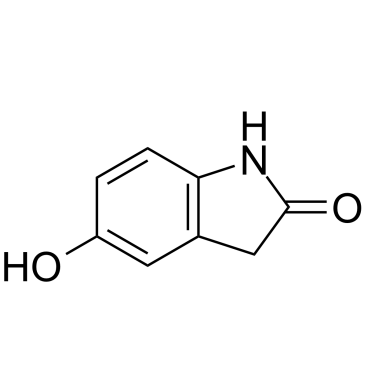
-
GC46705
5-Methoxycanthinone
5-Methoxycanthinon ist ein oral aktiver Inhibitor von Leishmania-StÄmmen.

-
GC40380
5-OxoETE
5-OxoETE is a polyunsaturated keto acid formed by the oxidation of 5-HETE in human neutrophils by a specific dehydrogenase.

-
GC46712
5-Phenyllevulinic Acid
A fungal metabolite

-
GC46079
5-Tricosylresorcinol
5-Tricosylresorcin ist das erste Zystenlipid.

-
GC49676
6β-hydroxy Budesonide
A metabolite of budesonide
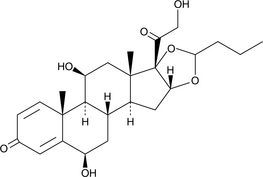
-
GC49629
6β-hydroxy Prednisolone
A metabolite of prednisolone

-
GC19536
6'-Sialyllactose Sodium Salt
6'-Sialyllactose (Natrium), ein vorherrschendes Milch-Oligosaccharid, reduziert die Internalisierung von Pseudomonas aeruginosa in menschliche Pneumozyten.

-
GC45772
6(5H)-Phenanthridinone
An inhibitor of PARP1 and 2

-
GC41424
6(S)-Lipoxin A4
The lipoxins are trihydroxy fatty acids containing a 7,9,11,13-conjugated tetraene.

-
GC46721
6-Chloro-2-fluoropurine
A heterocyclic building block

-
GC49551
6-Chloropurine Riboside
A nucleoside precursor

-
GC49749
6-Deoxypenciclovir
An inactive metabolite of famciclovir

-
GC45955
6-Ethyl-2,7-dimethoxyjuglone
6-Ethyl-2,7-dimethoxyjuglon ist ein aus SÜßwasserpilzen isolierter Metabolit.

-
GC46724
6-Hydroxypyridin-3-ylboronic Acid
A heterocyclic building block

-
GC49235
6-Methylmercaptopurine
A metabolite of 6-mercaptopurine

-
GC49488
6-Methylmercaptopurine-d3
An internal standard for the quantification of 6-MMP

-
GC49864
6-Methylpterin
A derivative of folic acid
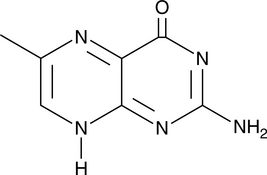
-
GC45715
6-Prenylindole
A bacterial metabolite

-
GC18776
6α-hydroxy Cholesterol
6α-hydroxy Cholesterol is an oxysterol that increases superoxide anion production in SK-N-BE cells when used at concentrations of 50 and 100 μM.
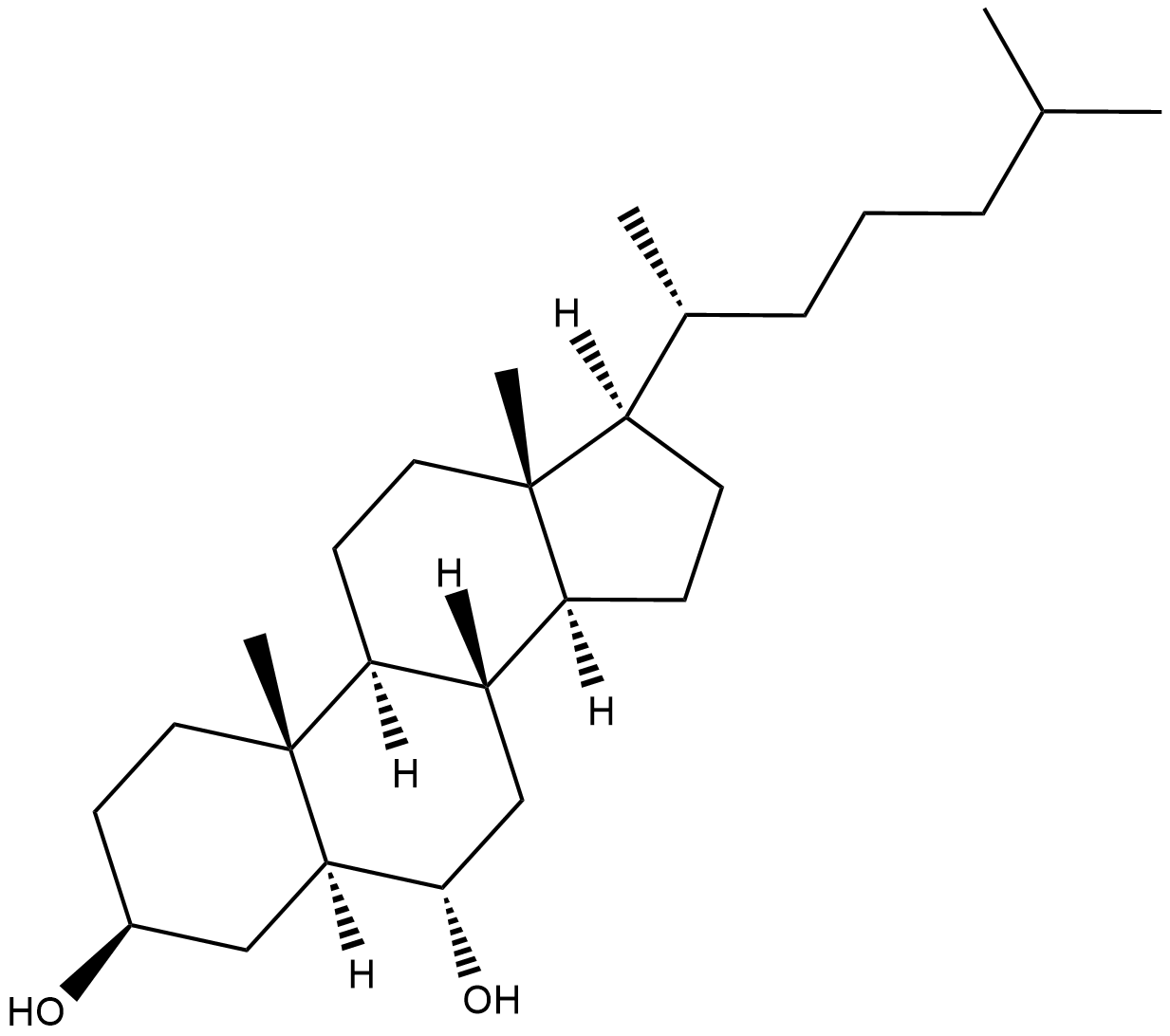
-
GC40202
7α-hydroxy Cholesterol-d7
7α-hydroxy Cholesterol-d7 is intended for use as an internal standard for the quantification of 7α-hydroxy cholesterol by GC- or LC-MS.

-
GC49206
7α-hydroxy Dehydroepiandrosterone
An active metabolite of dehydroepiandrosterone

-
GC46740
7β,27-dihydroxy Cholesterol
An oxysterol and agonist of RORγ and RORγt

-
GC52471
7(S),10(S)-DiHOME
An antibacterial hydroxy fatty acid

-
GC46732
7(S),17(S)-dihydroxy-8(E),10(Z),13(Z),15(E),19(Z)-Docosapentaenoic Acid
A metabolite of DPA with antiinflammatory properties

-
GC48769
7,10-dihydroxy-8(E)-Octadecenoic Acid
An antibacterial hydroxy fatty acid

-
GC46733
7,12-Dimethylbenz[a]anthracene
7,12-Dimethylbenz[a]anthracen hat als polyzyklischer aromatischer Kohlenwasserstoff (PAK) krebserzeugende Wirkung. 7,12-Dimethylbenz[a]anthracen wird verwendet, um die Tumorbildung in verschiedenen Nagetiermodellen zu induzieren.
![7,12-Dimethylbenz[a]anthracene Chemical Structure 7,12-Dimethylbenz[a]anthracene Chemical Structure](/media/struct/GC4/GC46733.png)
-
GC35184
7,3',4'-Tri-O-methylluteolin
7,3',4'-Tri-O-methylluteolin (5-Hydroxy-3',4',7-trimethoxyflavon), eine Flavonoidverbindung, besitzt starke entzÜndungshemmende Wirkungen in LPS-induzierten Makrophagen-Zelllinien, vermittelt durch Hemmung von Freisetzung von EntzÜndungsmediatoren, NO, PGE2 und entzÜndungsfÖrdernden Zytokinen.
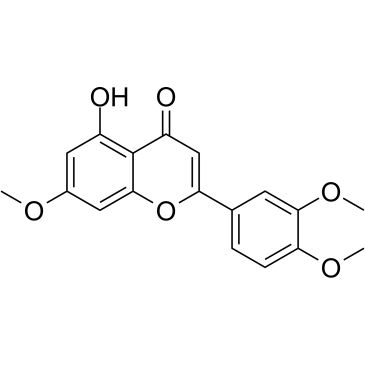
-
GC46080
7,3',4'-Trihydroxyflavone
7,3',4'-Trihydroxyflavon ist eine Flavonoid-Aglycon-Verbindung, die aus Ackerbohnenschoten isoliert wird.

-
GC35185
7,4'-Dihydroxyflavone
7,4'-Dihydroxyflavon (7,4'-DHF) ist ein aus Glycyrrhiza uralensis, dem Eotaxin/CCL11-Inhibitor, isoliertes Flavonoid, das die FÄhigkeit besitzt, die Eotaxin-Produktion konsequent zu unterdrÜcken und Dexamethason (Dex)-paradoxe Nebenwirkungen auf die Eotaxin-Produktion zu verhindern[ 1].
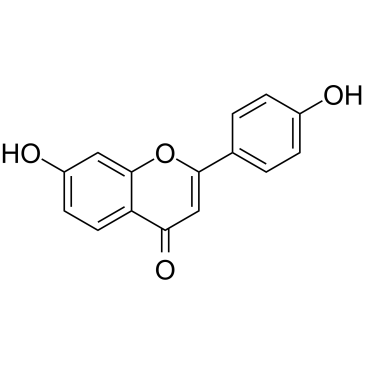
-
GC45673
7,8-Dihydroneopterin
7,8-Dihydroneopterin, ein EntzÜndungsmarker, induziert zellulÄre Apoptose in Astrozyten und Neuronen durch VerstÄrkung der Stickoxid-Synthase (iNOS)-Expression.



